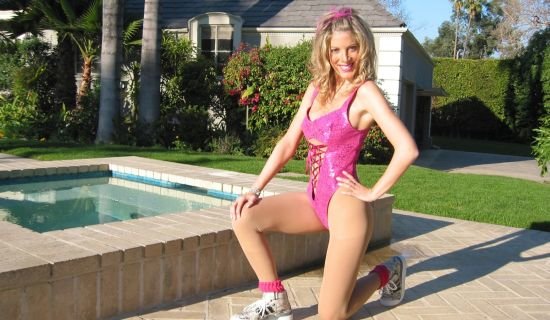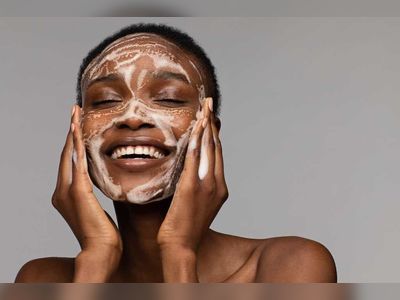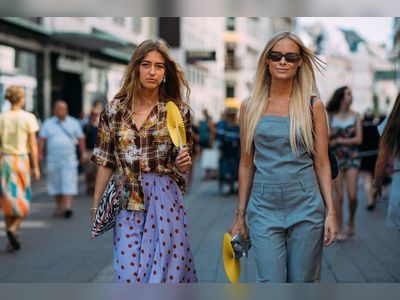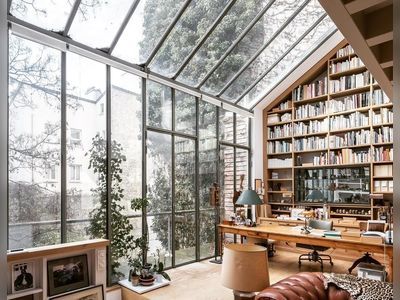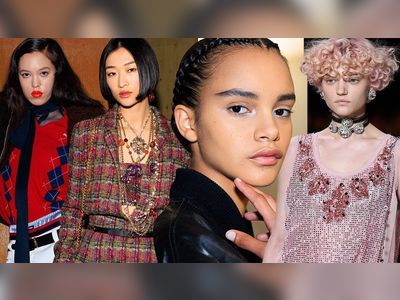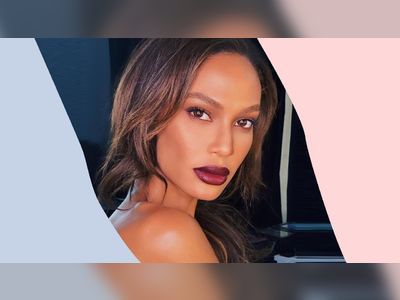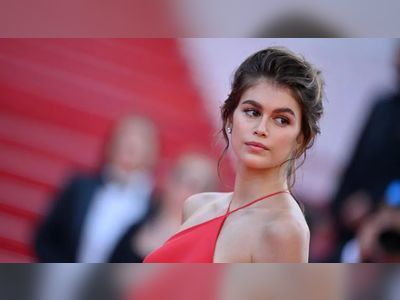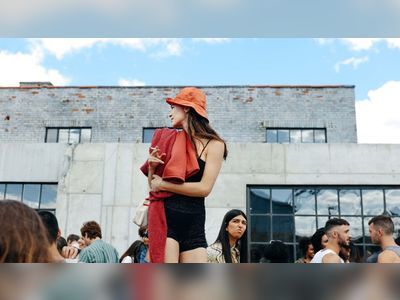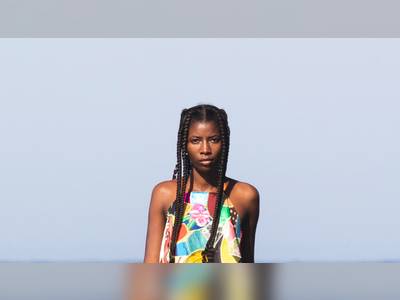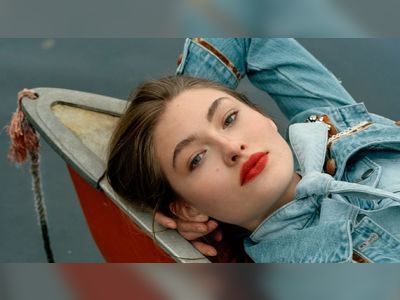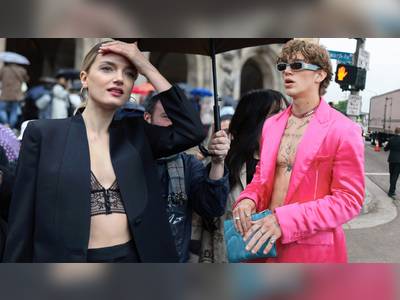The clip's popularity demonstrates that video can bring to fashion something that photography just cannot capture: the bounce of the ruffles, the sway of pleats and the rumbling staccato of a giant zipper.
Still photography would have reduced to a few familiar shots the video's hundreds of subtle micro-expressions, as Sevigny's mood ranged from careful contemplation and vampy seduction to childlike delight. Nuances like the backdrop whose radiance gradually intensifies into a blinding blanket of light would have been lost entirely.
Before it was released on to YouTube, Marcelo Krasilcic's voyeuristic clip of Sevigny wearing Kai Kuhne's collection was one of about 20 short films commissioned for "You Wear It Well," an annual festival dedicated to videos with themes of fashion, style and beauty.
Liberated from the confines of the photograph, fans of the new genre are reveling in video's ability to harness fashion through time, motion, sound, montage and narrative.
"Good fashion photography has always been like a storyboard for a film. The difference is that now we're seeing people bring that story off the magazine pages and to life," said Diane Pernet, who, with Dino Dinco, founded the film festival in 2006.
Curated from submissions to www.ashadedviewonfashion.com, Pernet's cult blog, the program screens first in Los Angeles each October and then tours international venues. Next up is Paris on Feb. 28 at the Espace L'Oréal, 14, rue Royale.
The fashion video has yet to solidify into a standard template, but most are no more than five minutes long. And some of the topics that have already appeared during "You Wear It Well" include: a spoof soap opera by the designer Jeremy Scott, starring Asia Argento and Tori Spelling; an erudite Prada perfume ad by Ridley and Jordan Scott; Nick Knight's confrontational films of Alexander McQueen and John Galliano designs; and a surreal satire on the future of plastic surgery by Erwin Olaf.
"We did a great project about the 'Sound of Clothes' in 2006, where we went into an anechoic chamber," which is soundproof and echo-free, "to capture the intimate audio properties of rubber, sequins, taffeta, chains, feathers, leather, et cetera. It's still one of my favorites," said Penny Martin, chief editor of SHOWstudio.com, an online fashion broadcasting company that regularly contributes videos to the festival.
When SHOWstudio made its debut eight years ago, pioneering live broadcasting, motion image and interactivity in the fashion field, the site struggled for an audience - and collaborators in the fashion industry.
"In hindsight, our ambition to create genuinely progressive fashion media was far too far ahead at that stage. Even the most experimental and visionary stylists and photographers would tell us, 'Oh, I don't really use computers,' and some didn't even have an e-mail account," said Martin. "We were banging our heads against a brick wall in many cases."
Now that the public has become accustomed to watching videos on sites like YouTube, clips have proliferated on fashion Web sites.
"Having spent so long feeling like 'the only horse in the race,' we're only too pleased that other fashion sites are aiming to create excellent fashion video media that would breathe life into the moribund, over-saturated magazine market," Martin said.
Ushering in new content, styles of coverage and forums for critique, the fashion video also has begun to move catwalk commentary from predictable television formats into styles better suited to the digital age.
One place reflecting those changes is the social networking site Iqons.com, a company based in London. The MySpace of the fashion world, Iqons has two video channels. Viewers can use a widget to integrate videos into their profiles, and a broadcast arm called Iqons TV was created last year to give its 19,000 members an editorial perspective.
"We wanted to keep a critical angle and, frankly, have a less sugar-coated view of fashion," said an Iqons co-founder, Suran Goonatilake. "I think fashion is one of the most undercriticized creative industries. Fashion is, by and large, an insiders' club where every garment or designer is considered by everyone, at least publicly, to be 'so fabulous.' "
Iqons TV fashion footage is decidedly low-fi, with some very tentative graphics, but its rough and ready editing style is a refreshing spin on the usual polished runway coverage. Goonatilake is the first to admit that it is all very much a work in progress, but he says that it is in the name of developing an alternative to what he calls the "incredibly dull" content on most traditional fashion TV programs.
Catwalk shows by young designers that are not seen on other fashion Web sites make up the majority of Iqons TV video content so far and include audience interviews as well as segments in which the footage is shown to members of the public and their comments are recorded.
A more thorough approach to the fashion video has been heralded by some of the mainstream online fashion magazines like Style.com as well as the sister sites to glossies like Vogue and Elle. The International Herald Tribune and The New York Times's T magazine are among the newspapers and magazines that have added fashion video content to their Web reporting.
On those sites, portraits, atmospheric films commissioned by designers and syndicated video from third-party directors are interspersed among the routine index of catwalk, backstage and red carpet video interviews.
"Vogue TV was a natural extension - allowing us to further open the window onto a world that was previously closed to all those not directly involved with the industry. We're not outsiders looking in; we're insiders welcoming others in," said Dolly Jones, chief editor of Vogue.com in Britain, where Vogue TV has been airing for more than a year. For example, Jones said, the channel recently broadcast an exclusive video tour inside the Paris apartments of Coco Chanel.
The public's appetite for fashion videos is more voracious than ever, and this fact is certainly not lost on big advertisers like Honda and Toshiba, who have signed up for embedded spots before the videos play - although the cost of such spots is not disclosed.
Where is the demand coming from? Spurred on by the television and film industry's enthusiastic pursuit of all things fashion, it seems the fashion world has reciprocated by embracing the moving image in a bid to better document itself, according to Marketa Uhlirova, director of the Fashion in Film Festival, which is based in London and curates a biannual program of historical and contemporary feature films with a fashion slant.
"The fascination with the fashion industry - its obsession with beauty and perfection on the one hand, and its imagined and real cruelty on the other - seems completely self-perpetuating, and recent mainstream TV has obviously done a lot to fuel it," she said. Uhlirova noted that some of these themes are central to the films in the festival's coming edition, which will be screened in May in five museums and movie houses around London.
On the mass-market level, the "Lagerfeld Confidentiel" documentary was released recently after the success of "The Devil Wears Prada," which grossed over $300 million globally at the box office. And now Hollywood is working on biopics about Coco Chanel, Maurizio Gucci and Roy Halston.
While fashion and film may be bosom buddies at the moment, that ebbs and flows over time, according to Pernet, who played herself in a cameo role in Robert Altman's 1994 landmark parody, "Prêt-à-Porter."
"With a few notable exceptions, fashion has been an afterthought in the grand scheme of cinema. Clothes rarely take center stage in feature-length films," Pernet said. "So what we're witnessing now, as the fashion video format evolves, is the first opportunity to put the spotlight on fashion in motion."
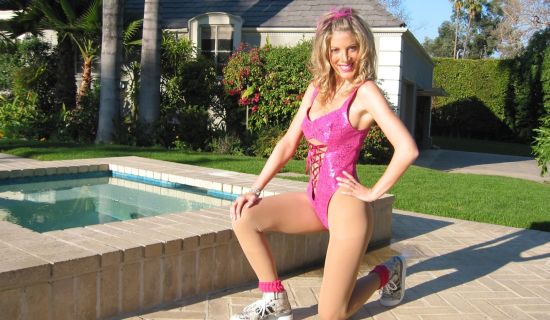
An image from the spoof soap opera by the designer Jeremy Scott, starring Asia Argento and Tori Spelling. The video was one of about 20 short films commissioned for "You Wear It Well," an annual festival dedicated to videos with themes of fashion, style and beauty.
